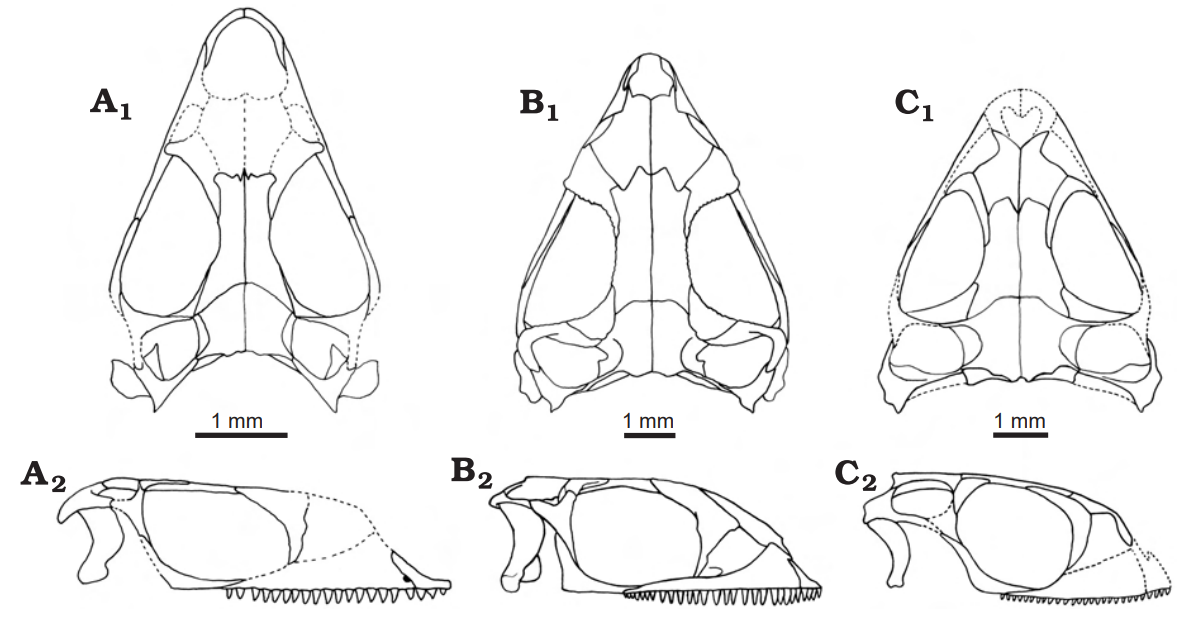Kuehneosauridae Skull Comparison on:
[Wikipedia]
[Google]
[Amazon]
 Kuehneosauridae is an
Kuehneosauridae is an
 Kuehneosauridae is an
Kuehneosauridae is an extinct
Extinction is the termination of a kind of organism or of a group of kinds (taxon), usually a species. The moment of extinction is generally considered to be the death of the last individual of the species, although the capacity to breed and ...
family of small, lizard-like gliding diapsids known from the Triassic period of Europe and North America
North America is a continent in the Northern Hemisphere and almost entirely within the Western Hemisphere. It is bordered to the north by the Arctic Ocean, to the east by the Atlantic Ocean, to the southeast by South America and the Car ...
. They are distinguished from other diapsids by their 'wings' formed by elongated ribs. These allowed the animal to glide and parachute similar to living gliding lizards. They were most likely insectivorous, judging from their pin-like teeth. They are often, but not always, placed in the group Lepidosauromorpha, though other studies have recovered them in other positions within Sauria, including Archosauromorpha
Archosauromorpha (Greek for "ruling lizard forms") is a clade of diapsid reptiles containing all reptiles more closely related to archosaurs (such as crocodilians and dinosaurs, including birds) rather than lepidosaurs (such as tuataras, liza ...
. The oldest and most primitive known member is '' Pamelina'' from the Early Triassic ( Olenekian stage) of Poland, which already has vertebrae with characteristics consistent with gliding or parachuting. '' Icarosaurus'' is known from a single specimen from the Carnian-aged Lockatong Formation of New Jersey. The Late Triassic (Norian
The Norian is a division of the Triassic Period. It has the rank of an age (geochronology) or stage (chronostratigraphy). It lasted from ~227 to million years ago. It was preceded by the Carnian and succeeded by the Rhaetian.
Stratigraphic defi ...
stage) kuehneosaurids from England, '' Kuehneosaurus'' and '' Kuehneosuchus'', are very similar and can be distinguished from one another primarily on the length of their "wing" ribs, relatively short and massive in ''Kuehneosaurus'' but longer and more gracile in ''Kuehneosuchus. Kuehneosaurus'' was likely only capable of parachuting, while ''Kuehneosuchus'' could probably glide. ''Rhabdopelix
''Rhabdopelix'' (meaning "rod pelvis") is a dubious genus of possible kuehneosaurid reptile, from the Late Triassic-age Lockatong Formation of Pennsylvania, USA. Based on partial, possibly chimeric remains, it was described by American natural ...
'' may have been a kuehneosaurid; however, the fossils were lost, and the characteristics described are not entirely consistent with the other family members.
The cladogram below follows a 2009 analysis by paleontologists Susan E. Evans and Magdalena Borsuk−Białynicka.
See also
* ''Draco'' (genus)References
Prehistoric reptile families Prehistoric lepidosauromorphs Triassic lepidosauromorphs Olenekian first appearances Norian extinctions Taxa named by Alfred Romer {{triassic-reptile-stub